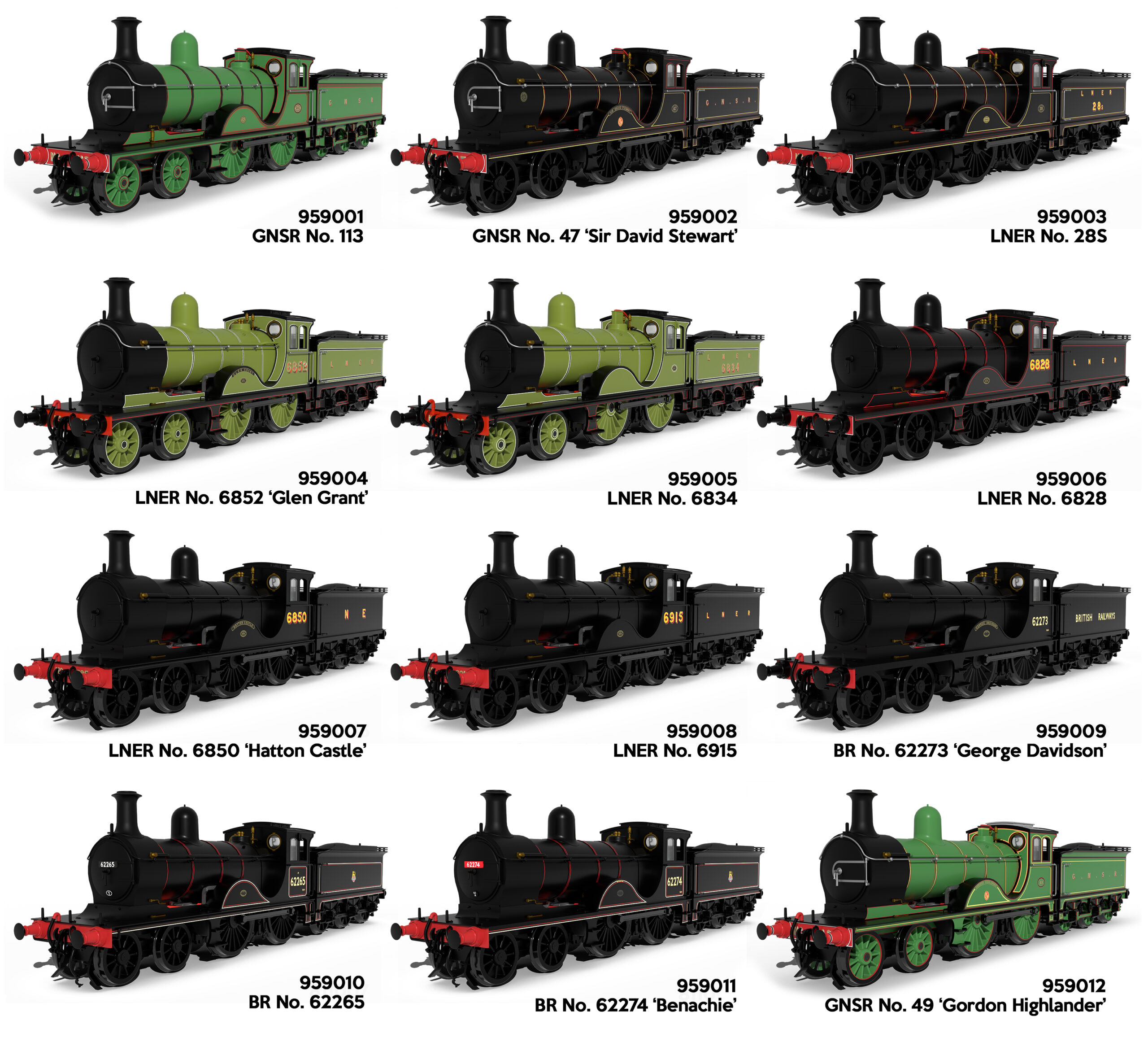
The Great North of Scotland Railway served all the major towns and cities Northeast of the Cairngorms. So, despite its grandiose name, the railway
covered a rather modest area of Scotland when compared to the other major Scottish pre-grouping companies.

As the turn of the 20th century approached, the GNSR experienced an upturn in traffic. To accommodate this newfound busy period, 10 brand-new 4-4-0 locomotives were ordered from Neilson, Reid & Co.
It was requested that the new locos be similar to the T Class that Neilson, Reid & Co had built for the GNSR only a few years before; these new locos would
have saturated boilers and be fitted with cab-side windows. They would be classified as Class V.

Despite the original order being for 10 Class V locomotives, when the GNSR took delivery of the first five in 1899, they decided that the remaining five locos
were surplus to requirements as they were struggling financially. Neilson, Reid & Co. had already completed the other five, so they needed to
find a buyer. Thankfully, the newly formed South Eastern and Chatham Railway were desperate for new locos, and this urgency played into builder’s
hands nicely; they sold them to the SECR at a noticeably higher price. The SECR would classify these five locos as the G Class.

It wouldn’t be long before the GNSR wanted additional locos. Throughout the next 12 years, several proposals to increase the fleet of V Class were made by
the railway’s Locomotive, Carriage and Wagon Superintendent, William Pickersgill. Each time, the Directors would take many years to agree, and build
only a small number of the proposed number. In total,13 V Class locos would be built between 1899 and 1921.
Pickersgill’s replacement, T.E. Heywood, requested additional locos to replace old stock at the end of the Great War; however, these otherwise similar locos
would have superheated boilers, and they were classified as the F Class. A total of eight F Class locos were built, and unlike the V Class, these engines
were given names.

Upon the grouping of the railways, the LNER inherited both the V and F Class locos and due to their similarities combined them into the Class designation of D40.

These Scottish-built locos would continue to serve Britain’s railways for many years, and with only three being withdrawn by the LNER, 18 would pass to
British Railways. British Railways would condemn the surviving locos throughout the 50s, with the last being withdrawn in 1958. BR retained a sole superheated survivor, which was reserved for railtours and was earmarked for eventual preservation.

This locomotive, No.62277, better known as Gordon Highlander, was restored at Inverurie Works. Even though this was not a livery that it would have carried
during its pre-grouping days, it was renumbered as No.49 and repainted in the eye-catching early GNSR Green livery.

Gordon Highlander enthralled crowds across Scotland until 1966. Upon retirement, it spent many years at the Museum of Transport in Glasgow; but is
now currently on loan to the Bo’ness & Kinneil Railway and the Museum of Scottish Railways.
The Rapido Trains UK OO Gauge LNER D40 4-4-0 range includes tooling variations covering both the saturated boiler F Class and superheated V Class.
The models will be available in a variety of liveries, from pre-grouping right through to BR, and of course, the legendary Gordon Highlander.

The range features a selection of detailing variants, including different chimneys, whistles, running plates, tender spring dampers, tender coal rails, smoke boxes and smoke box doors. Other small detail variants include different lubricators, wash-out plugs, and lamp iron positioning. Different models are then fitted with clack valves, snifting valves, steam heat and vacuum pipe valances, and boiler side ejector pipes. For that finishing touch, all models have cosmetic inside valve gear.

Those wishing to personalise their model will be pleased to hear that the detailing bag includes lamps, steam heating pipes and tablet catchers. You can look forward to a smooth-running mechanism, factory-installed speakers, NEM coupler pockets, an ESU 21-pin decoder socket, fitted MoPower stay-alive capacitor, tender pickups, and firebox flicker with a dynamic fire draw effect.
The order book is open, and you can pre-order your models directly from us today or from any of our Official Retailers.
Order your model now by clicking on the item below:












